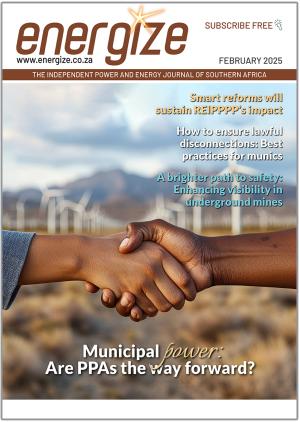Despite concerns within the automotive industry about the slow implementation of the Electric Vehicle (EV) White Paper recommendations, which were released at the end of last year, the South African government’s strategy for transitioning to EVs is on track.
This is the view of Prian Reddy, Senior Analyst for Sustainable Mobility and Energy Storage at GreenCape. His comments follow President Cyril Ramaphosa’s update on the EV White Paper during his address at the South African Auto Week 2024 at the Cape Town International Convention Centre. The president confirmed that the Department of Trade, Industry and Competition, National Treasury and the Department of Mineral and Petroleum Resources has begun discussions on implementing the white paper’s recommendations.
“Efforts include the beneficiation of critical minerals for the production of new energy vehicles (NEVs), the development of battery production and establishing value chains for green hydrogen fuel cells. We are also working to finalise comprehensive NEV policy guidelines that do not exclude alternative technologies such as hybrids and plug-in hybrids,” said Ramaphosa.
He also hinted at future incentives for manufacturers as well as tax rebates and subsidies for consumers to drive the adoption of EVs. "It's not just about creating a greener future – it’s also about keeping South Africa competitive as global markets shift to EVs.”
Strategic timing of implementation
The timelines outlined in the EV White Paper were strategically designed to allow for gradual implementation, said Reddy. “Government set 2026 as the target to begin full implementation, which was a deliberate move to give the automotive industry time to prepare, including securing assembly lines and budgeting.”
One of the main considerations, according to Reddy, was global price parity between EVs and internal combustion engine vehicles. “By 2026, EVs are expected to reach price parity with ICE vehicles. The government’s schedule aligns with this market trend, ensuring that the recommendations in the white paper will be implemented at the optimal time.”
While the industry has been pushing for faster implementation, rushing the process would not have been practical, Reddy added. “If government had introduced consumer subsidies earlier, they wouldn't have had the intended impact because EVs were still too expensive. Now that we're approaching price parity, a consumer subsidy in 2025 will make more sense and be more effective. Government can only be as quick as the private sector is moving. It would not make sense to move at a pace faster than the private-sector investment pipeline.”
Consumer incentives a positive step
The recent clarity on consumer incentives marks a positive step forward, said Reddy. “The president’s pronouncement is the first step towards actioning the incentives. Government departments now have a clear mandate to begin the implementation process. The next step is for government to find the budget for the incentive scheme, which will likely be announced in next year’s National Budget speech in February.”
He also pointed out that government’s focus on resolving the country’s energy crisis, particularly load shedding, made it difficult to prioritise EV policy over the past year. “Now that the energy situation has stabilised somewhat, there is more room to address other priorities, including implementation of the EV White Paper.”
Uncertainty about hybrid technologies
Automotive manufacturers have raised concerns about the exclusion of hybrid and plug-in hybrid technologies from NEV policy guidelines – based on uncertainty about the EV manufacturing incentives including these technologies.
“Manufacturers have already invested in local facilities for hybrid and plug-in hybrid vehicles. The president clarified that government is considering a separate incentive package to address this gap,” Reddy said.















